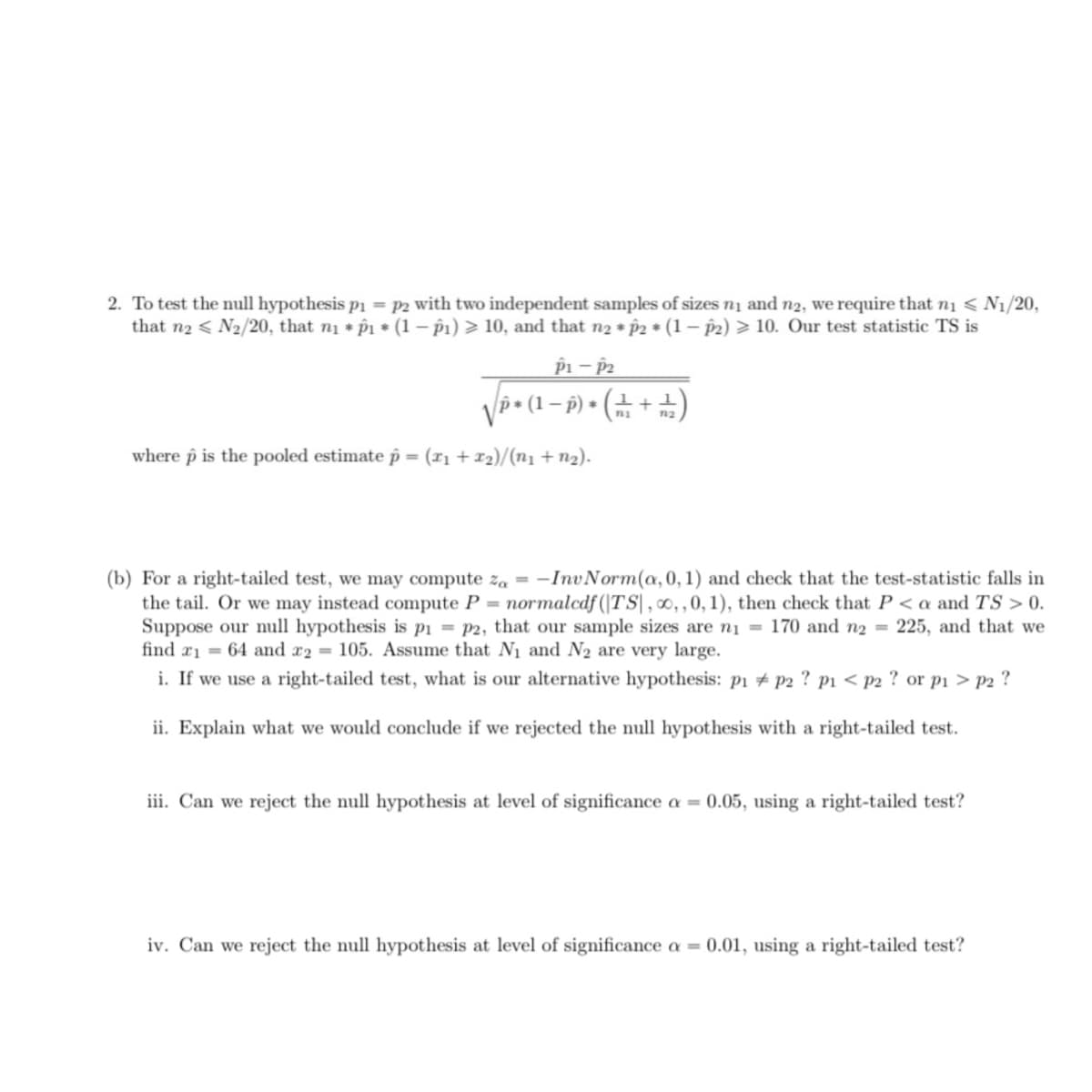i. If we use a right-tailed test, what is our alternative hypothesis: p1 # p2 ? p1 < p2 ? or p1 > P2 ? ii. Explain what we would conclude if we rejected the null hypothesis with a right-tailed test. iii. Can we reject the null hypothesis at level of significance a = 0.05, using a right-tailed test? iv. Can we reject the null hypothesis at level of significance a = 0.01, using a right-tailed test?
i. If we use a right-tailed test, what is our alternative hypothesis: p1 # p2 ? p1 < p2 ? or p1 > P2 ? ii. Explain what we would conclude if we rejected the null hypothesis with a right-tailed test. iii. Can we reject the null hypothesis at level of significance a = 0.05, using a right-tailed test? iv. Can we reject the null hypothesis at level of significance a = 0.01, using a right-tailed test?
Algebra & Trigonometry with Analytic Geometry
13th Edition
ISBN:9781133382119
Author:Swokowski
Publisher:Swokowski
Chapter10: Sequences, Series, And Probability
Section10.8: Probability
Problem 32E
Related questions
Question
Solve questions 1 through 4 please

Transcribed Image Text:2. To test the null hypothesis p1 = p2 with two independent samples of sizes nį and n2, we require that nį < N1/20,
that n2 < N2/20, that nị * p1 * (1 – î1) > 10, and that n2 * p2 * (1 – p2) > 10. Our test statistic TS is
p) *
+
where p is the pooled estimate p = (x1 + x2)/(nị + n2).
%3D
(b) For a right-tailed test, we may compute za = -InvNorm(a, 0, 1) and check that the test-statistic falls in
the tail. Or we may instead compute P = normalcdf (|T S| , ∞, , 0, 1), then check that P< a and TS > 0.
Suppose our null hypothesis is pi = p2, that our sample sizes are ni = 170 and n2 = 225, and that we
find r1 = 64 and x2 = 105. Assume that N1 and N2 are very large.
i. If we use a right-tailed test, what is our alternative hypothesis: p1 # p2 ? p1 < p2 ? or pi > p2 ?
ii. Explain what we would conclude if we rejected the null hypothesis with a right-tailed test.
iii. Can we reject the null hypothesis at level of significance a = 0.05, using a right-tailed test?
iv. Can we reject the null hypothesis at level of significance a = 0.01, using a right-tailed test?
Expert Solution
This question has been solved!
Explore an expertly crafted, step-by-step solution for a thorough understanding of key concepts.
Step by step
Solved in 2 steps

Knowledge Booster
Learn more about
Need a deep-dive on the concept behind this application? Look no further. Learn more about this topic, statistics and related others by exploring similar questions and additional content below.Recommended textbooks for you

Algebra & Trigonometry with Analytic Geometry
Algebra
ISBN:
9781133382119
Author:
Swokowski
Publisher:
Cengage

Algebra & Trigonometry with Analytic Geometry
Algebra
ISBN:
9781133382119
Author:
Swokowski
Publisher:
Cengage